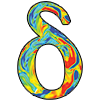Toggle Episode List
DPM, Beginner: CFD Simulation Training Course — Ep 01
DPM in ANSYS Fluent
- Episode
- 01
- Run Time
- 47m 10s
- Published
- Aug 02, 2025
- Topic
- DPM
- Course Progress
- 0%
About This Episode
Comprehensive Overview of Particulate Flow Modeling in ANSYS FLUENT
This educational resource serves as the second installment in our Discrete Phase Model (DPM) training series, providing an extensive examination of particulate flow simulation capabilities within ANSYS FLUENT. The presentation methodically explores the full spectrum of DPM functionality, covering essential configuration options and specialized modeling approaches.
Key Topics Covered:
Core Configuration Elements
- DPM Interface Components: Settings for phase interaction and particle treatment methodologies
- Trajectory Calculation Parameters: Controls governing the numerical tracking process
Advanced Physical Phenomena
- Environmental Interactions: Radiation effects, thermophoresis, and various force models (Saffman lift, virtual mass, pressure gradient)
- Surface Interactions: Erosion/accretion modeling capabilities
- Phase Change Dynamics: Pressure-influenced boiling and temperature-dependent latent heat models
- Particle Interaction Mechanisms: Two-way turbulence coupling, DEM collision modeling, stochastic collision simulation, coalescence, and breakup processes
Particle Introduction Methods
- Injection Configurations: Single-point, grouped, surface-based, and conical release patterns
- Particle Classification Options: Massless tracers, inert particles, liquid droplets, combusting particles, and multi-component formulations
Particle Property Distributions
- Size Distribution Models: Linear, uniform, Rosin-Rammler, and logarithmic Rosin-Rammler approaches
Specialized Physics Models
- Drag Formulations: Spherical, non-spherical, Stokes-Cunningham, high-Mach-number, and dynamic drag laws
- Droplet Breakup Models: TAB and Wave methodologies
- Turbulent Transport Models: Stochastic tracking and cloud tracking approaches
- Computational Efficiency: Parcel modeling techniques
Boundary Condition Treatments
- Particle-Boundary Interactions: Reflection, trapping, escape, wall-jet, and wall-film behaviors

